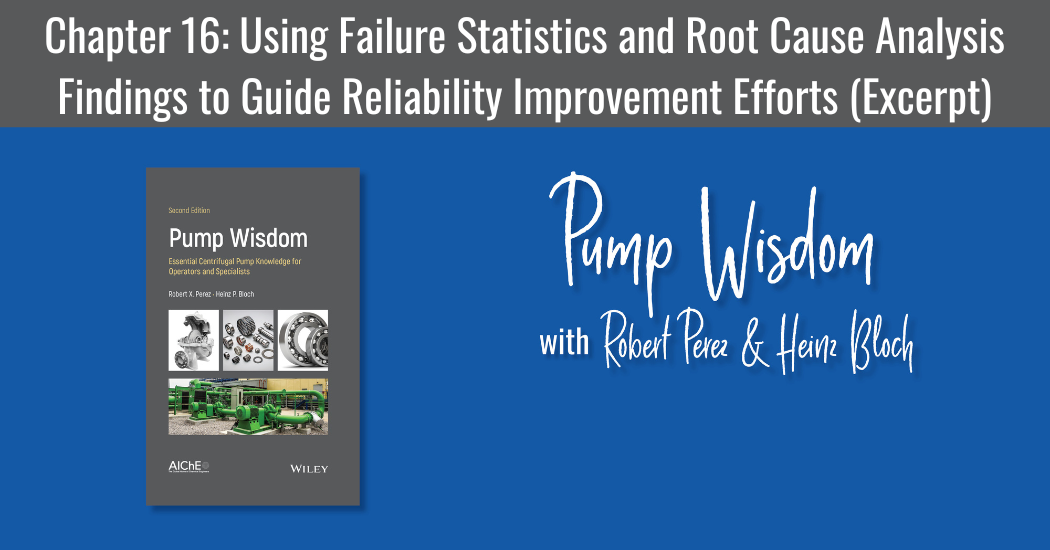Explore key facets of centrifugal pump ownership, installation, operation, and troubleshooting
The Second Edition of Pump Wisdom: Essential Centrifugal Pump Knowledge for Operators and Specialists delivers a concise explanation of how pumps function, the design specifications that must be considered before purchasing a pump, and current best practices in lubrication and mechanical seals.
This new edition also contains new startup and surveillance tips for pump operators, as well as repair versus replacement or upgrade considerations for maintenance decision-makers, new condition monitoring guidance for centrifugal pumps, and expanded coverage of operator best practices.
Read Pump Wisdom: Chapter 15: Fits, Dimensions and Related Misunderstanding (Excerpt)
Chapter 16: Using Failure Statistics and Root Cause Analysis Findings to Guide Reliability Improvement Efforts (Excerpt)
Performing your own projected MTBF calculations
Simplified calculations will give an indication of the extent to which improving one or two key pump components can improve overall pump MTBF (Chapter 16, Ref. 2).
Say, for example, that there’s agreement that the mechanical seal is the pump component with the shortest life, followed by the bearings, coupling, shaft, and sometimes impeller, in that order. The anticipated mean-time-between-failure (operating MTBF) of a complete pump assembly can be approximated by summing the individual MTBF rates of the individual components, using the following expression:
1/MTBF = [( 1/L 1 ) 2 + ( 1/L 2 ) 2 + (1/L 3 ) 2 + (1/L 4 ) 2 ] 0.5 Eq. (1)





Comments